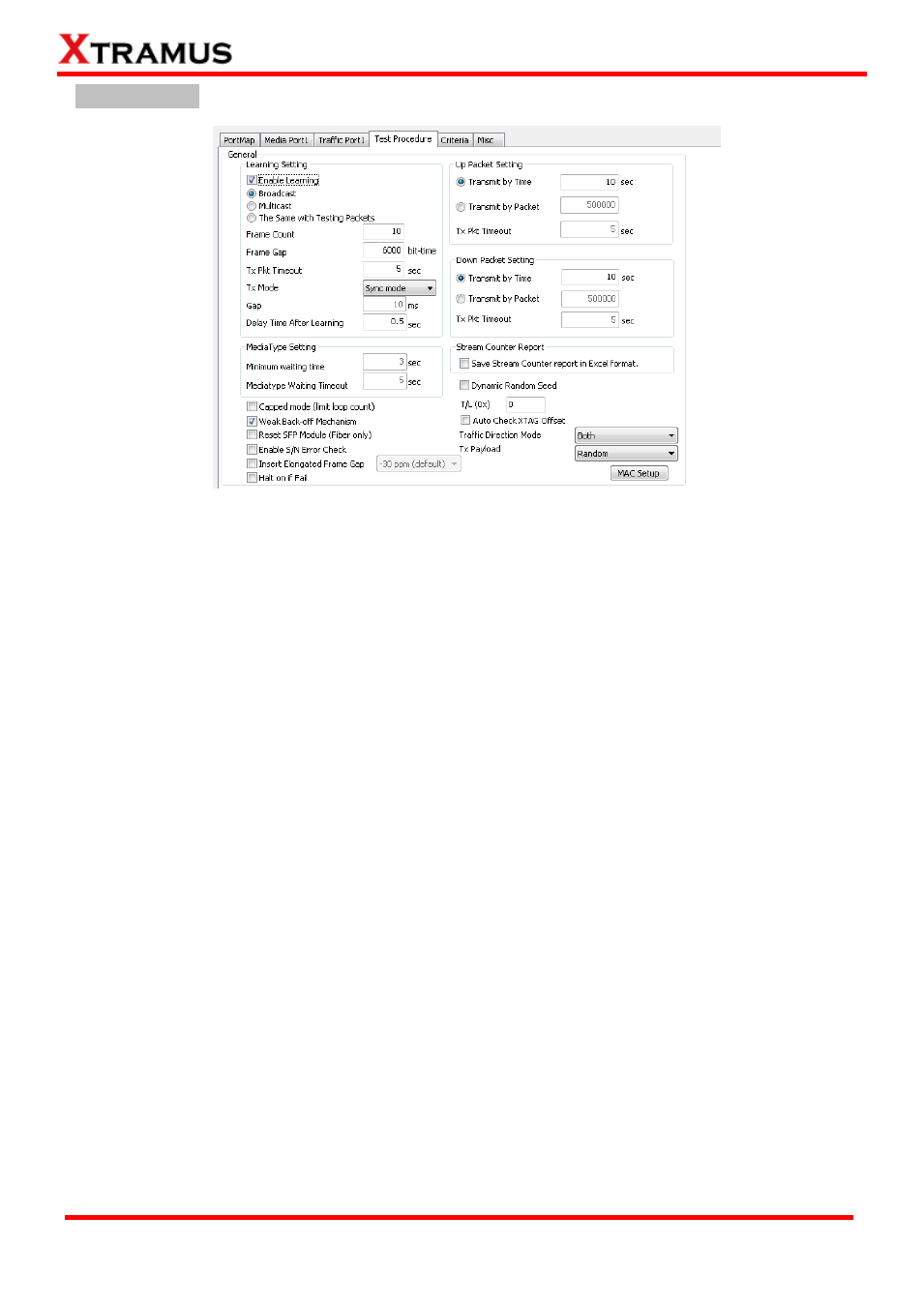Xtramus APMPT-4 V2.4 User Manual
Page 125

125
E-mail: [email protected]
Website: www. Xtramus.com
XTRAMUS TECHNOLOGIES
®
Test Procedure
Learning Setting:
Enable Learning: Enabling this function allows learning packets transmitted to the DUT before
test packets are transmitted. If you disable this function, no learning packets will be transmitted.
Broadcast: Select the learning packet mode for Broadcast.
Unicast: Select the learning packet mode for Unicast.
The Same with Testing Packets: The learning packet mode will be the same as the Testing
Packets settings.
Frame Count: Repeat frame count per learning packets burst.
Frame Gap: Duration time between learning frames.
Tx Pkt Timeout: If the system fails to send the learning packet within the time you set in TxPKT
Timeout field, the packet will be drop.
Tx Mode: You can change how learning packet will be transmitted. By clicking the Tx
scroll-down menu, you can choose Sync Mode, Group Mode (transmitting gap can be set in the
Gap field located down below), and Sequence Mode.
Delay Time After Learning: The time gap between after learning and the next process.
MediaType Setting:
Minimum Waiting Time: APMPT-4 will halt at least for the Minimum Waiting Time you input
here during auto-negotiation process.
Media Type Waiting Timeout: If the time spent for auto-negotiation exceeds the Media Type
Waiting Timeout you set here, the test will stop and the test result will be fail.
Capped Mode (limit loop count): Selecting this function will allow packets to be transmitted by
sequence.
Weak Back-off Mechanism: When packet collision occurs, the system will wait for at least 1
slot-time before starting to transmit packets again if this function is enabled.
